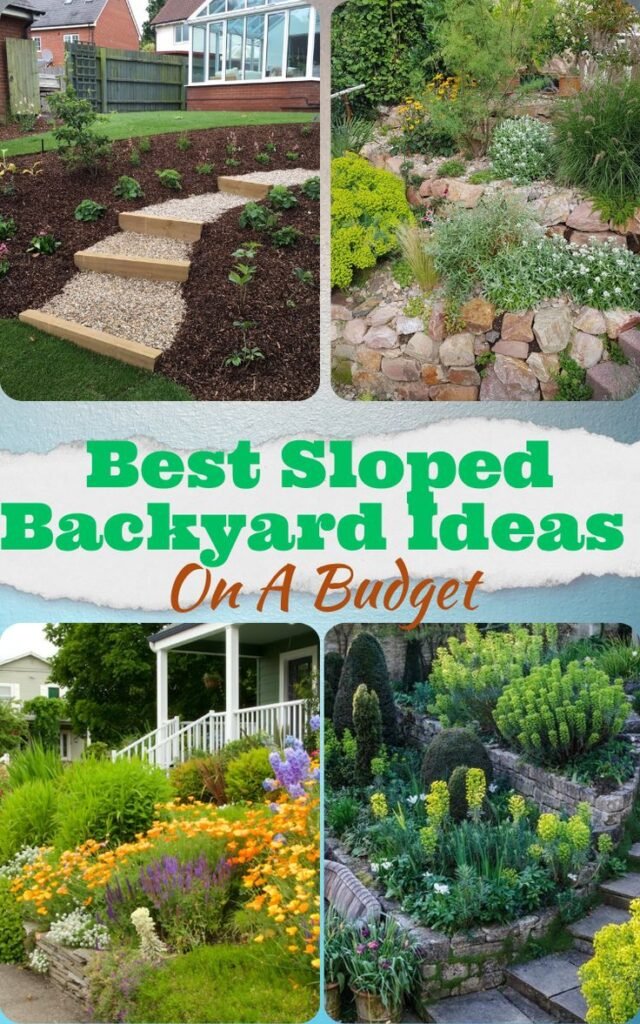
If you’ve got a sloped backyard, you might feel like you’ve been dealt a tough hand when it comes to landscaping. I used to think the same thing until I realized that a slope isn’t a problem—it’s actually a design opportunity! The key is finding affordable, creative ways to work with the land instead of against it.
With a little elbow grease and smart planning, even the steepest of backyards can be transformed into a functional and beautiful outdoor space. And don’t worry, you don’t have to spend a fortune doing it. Most of these ideas are DIY-friendly and budget-conscious.
So let me walk you through 13 of the best sloped backyard ideas I’ve come across. I promise you’ll find something here that sparks your imagination without emptying your wallet.
1. Terracing with Timber or Stone

One of the most effective ways to handle a slope is by terracing it. I remember helping a friend use reclaimed wood to create flat areas on a hillside, and it made such a difference! By cutting into the slope and building retaining areas with timbers or stones, you instantly make the space more usable.
You don’t need fancy materials either. Landscape timbers or even old railway ties can do the trick. If you prefer a more natural look, go for dry-stacked stones that blend seamlessly into the environment. These options are much more affordable than poured concrete.
Layer your terraces with a mix of plants and maybe even a few decorative touches like solar lights or stepping stones. The key is to create levels that are both functional and beautiful. Plus, it really helps with erosion control.
2. Mulch Paths and Steps
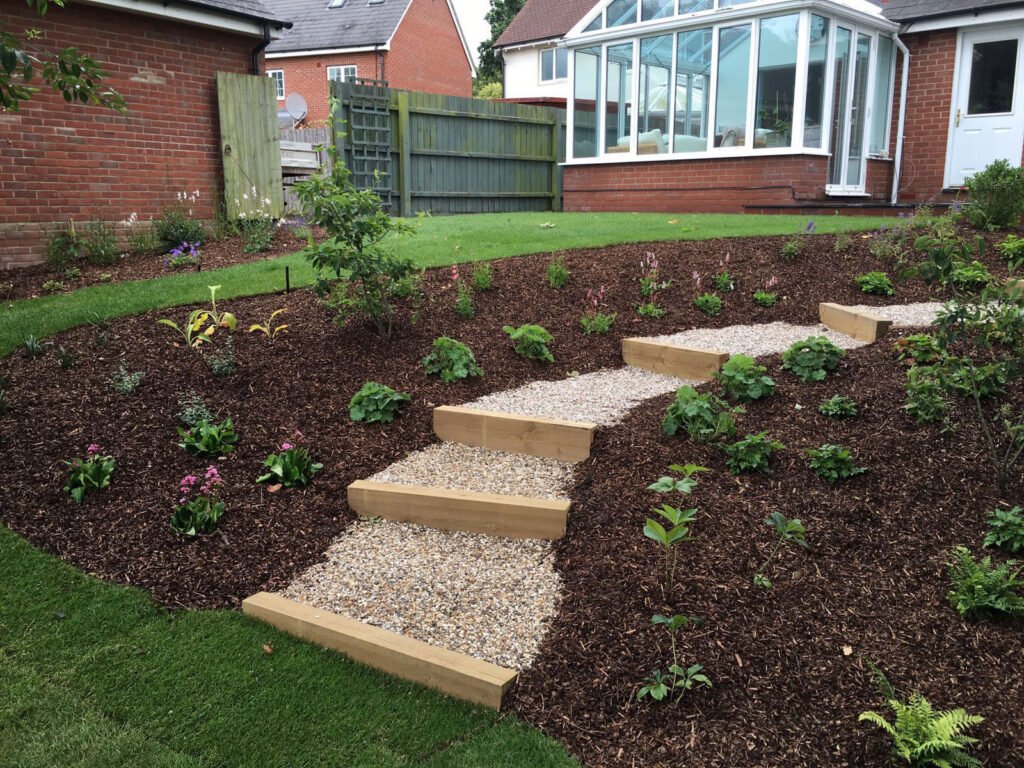
Creating paths and steps on a slope doesn’t have to be a complicated project. In fact, using mulch or gravel is one of the easiest and most budget-friendly ways to make your sloped backyard more accessible. I’ve done this myself using free wood chips from a local tree trimming service.
You can edge the paths with bricks, logs, or even larger stones to keep the mulch in place. It gives the backyard a rustic, natural feel and helps define walking areas clearly. Plus, it’s a lot safer than navigating a muddy hillside!
Adding simple wooden steps or pavers at steeper sections makes it even more user-friendly. The combination of mulch and natural materials keeps things cohesive while saving you a ton of money.
3. DIY Retaining Walls with Concrete Blocks
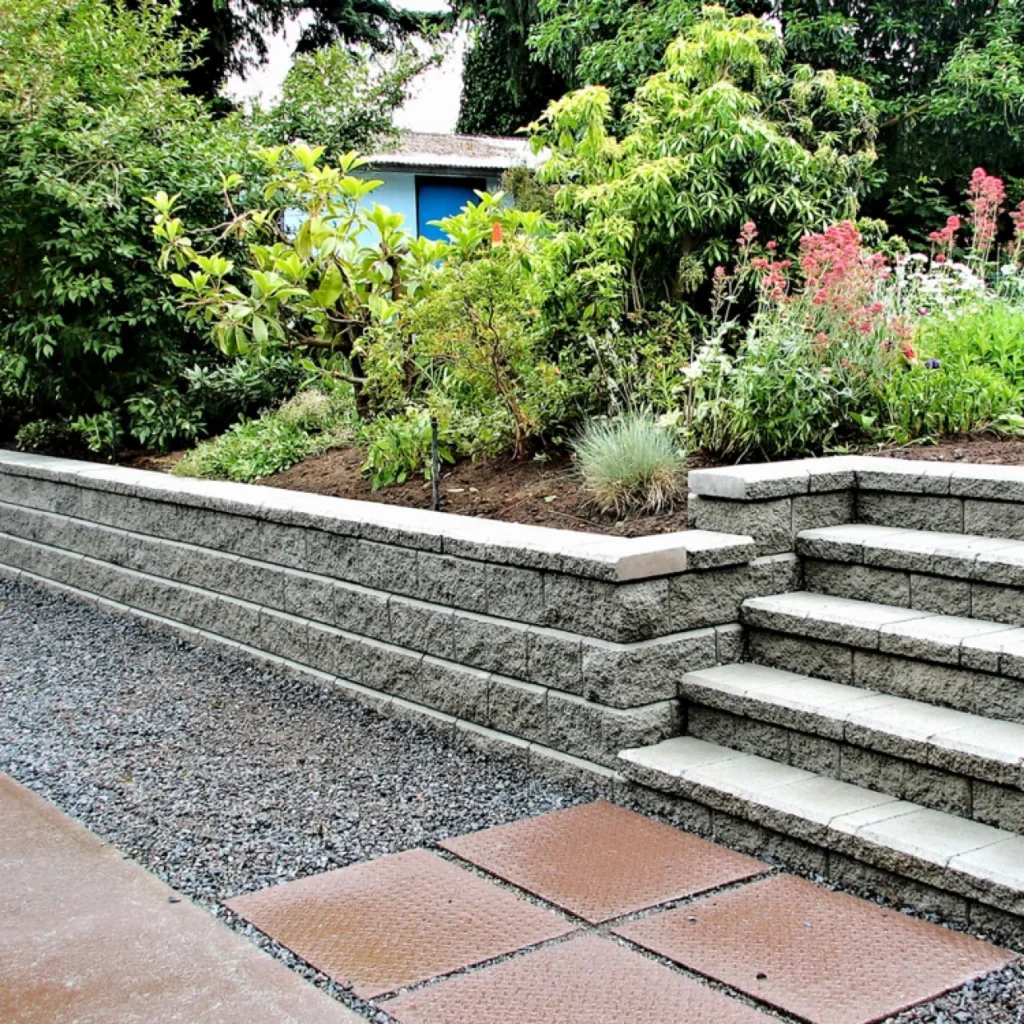
If you need something a bit sturdier, retaining walls are your best friend. I’ve seen people build great-looking walls using inexpensive concrete blocks or even those ready-to-use concrete bags that harden in place. It’s a solid way to create flat planting zones or patio spots.
You don’t have to be a masonry expert either. Just make sure your base is level, use gravel for drainage, and take your time stacking everything straight. A little patience goes a long way in getting it right.
I love that you can paint or stain concrete blocks to match your aesthetic, giving you flexibility in design while keeping costs low. It’s functional, sturdy, and very do-it-yourself-friendly.
4. Sloped Rock Garden
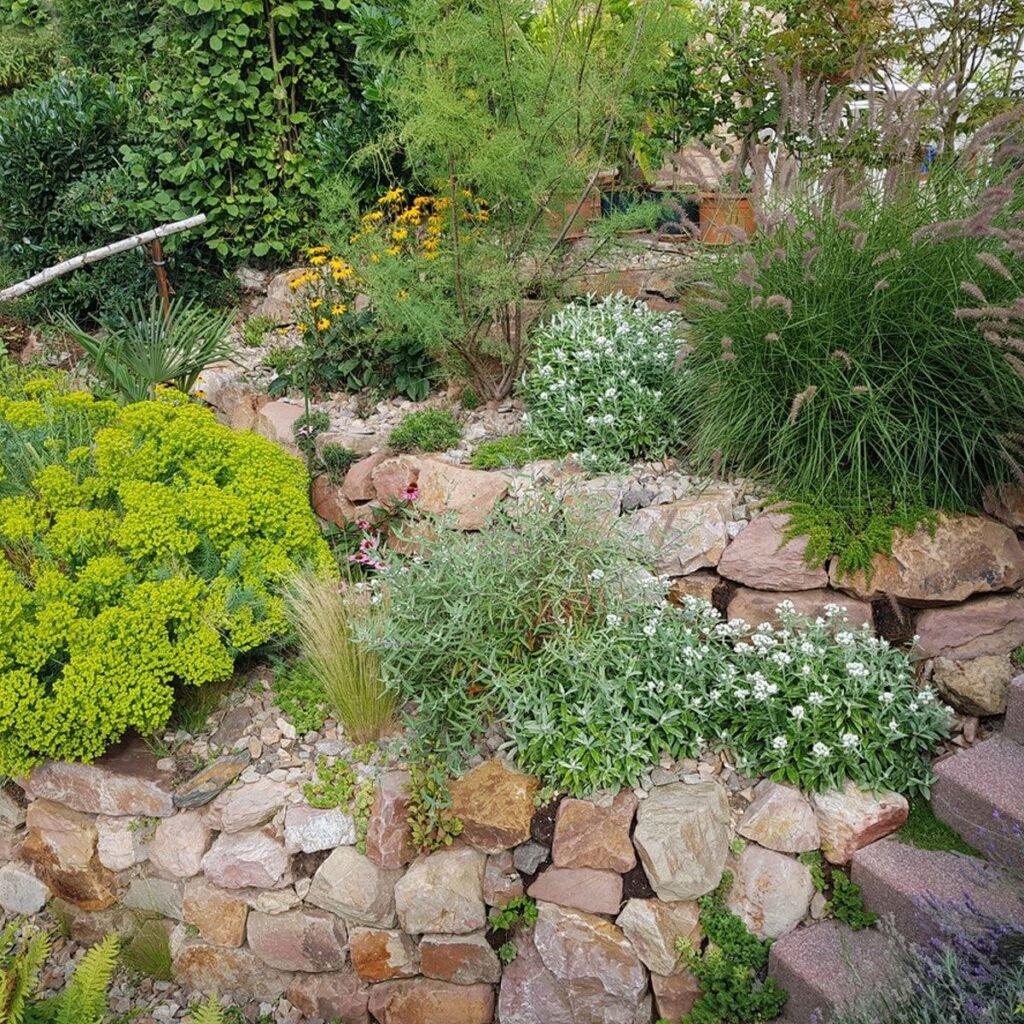
Rock gardens are surprisingly easy to set up, and they work beautifully on sloped terrain. I created one in a tricky corner of my yard using rocks I collected for free and a few low-maintenance plants like sedum and lavender.
The slope actually adds to the aesthetic by making the layers of rocks and plants more visible. You can play with texture and color using a mix of gravel, river stones, and boulders. It’s kind of like painting with rocks!
This is a great low-water option if you live in a dry area. Once it’s set up, it basically takes care of itself, which is always a win in my book.
5. Native Plant Hillside Landscaping
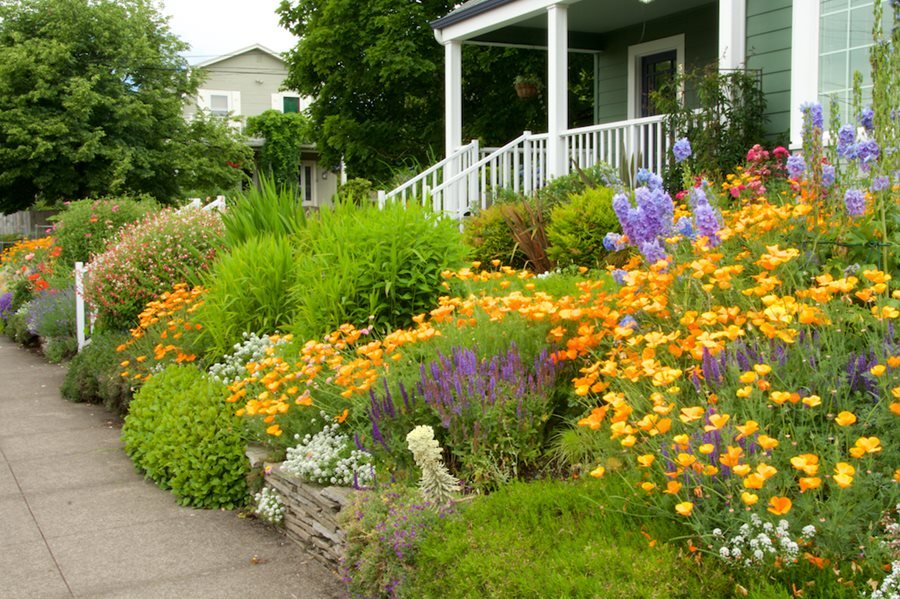
Instead of fighting the slope, why not let nature help you out? Native plants are perfectly suited to your climate and usually require less water and maintenance. I planted a mix of native grasses and flowering ground covers on my own slope, and it’s thrived with very little effort.
They help stabilize the soil, too. I noticed a big reduction in runoff and erosion after switching from grass to native perennials. And the best part? Many local garden centers and municipalities offer native plants at discounted prices.
I also found that native plants attract birds and pollinators, which brings a lovely energy to the yard. It feels more like a peaceful retreat than just a piece of land I had no clue what to do with.
6. Affordable Outdoor Stairs
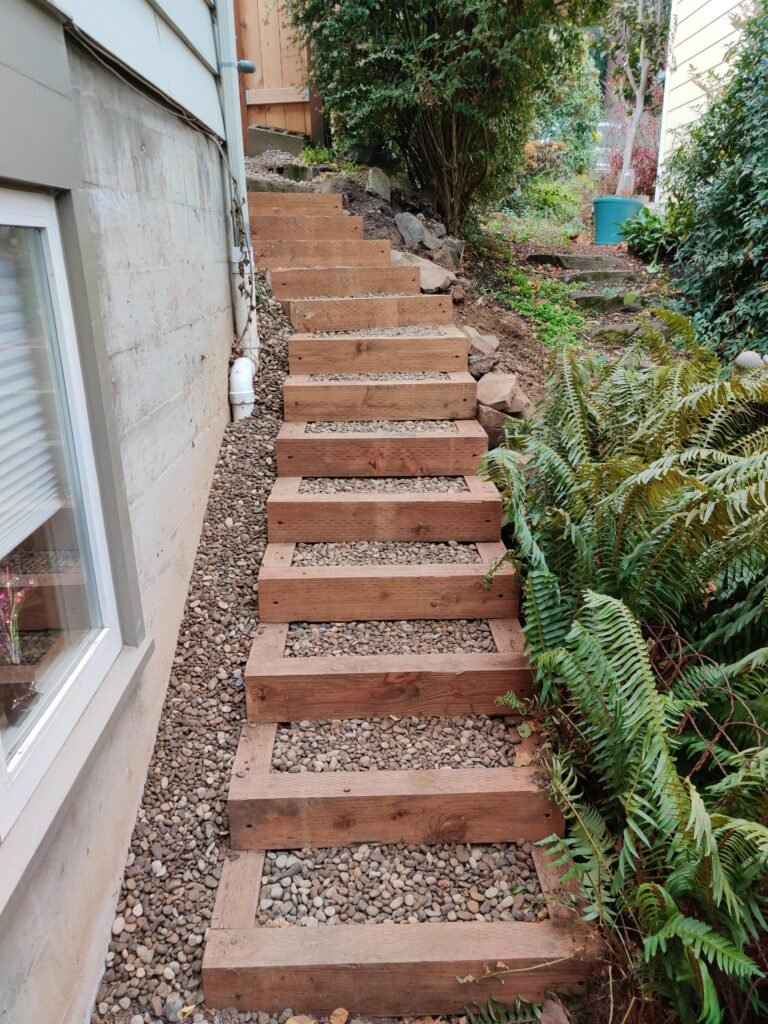
Stairs are sometimes a must when dealing with steep areas, but they don’t have to be expensive. I’ve seen some really clever designs using old railway ties or even salvaged wood pallets. It’s all about anchoring them well and keeping the rise and run comfortable to walk on.
You can mix materials too. One of my neighbors built steps with timber frames and filled them with gravel. It looked great and blended naturally with the rest of the landscape. Don’t forget to add a railing if it’s a particularly steep climb.
A simple path with steps transforms an unusable slope into a charming walkway. Add a few solar lights along the side, and you’ve got yourself a safe and stylish solution.
7. Upcycled Materials for Garden Tiers
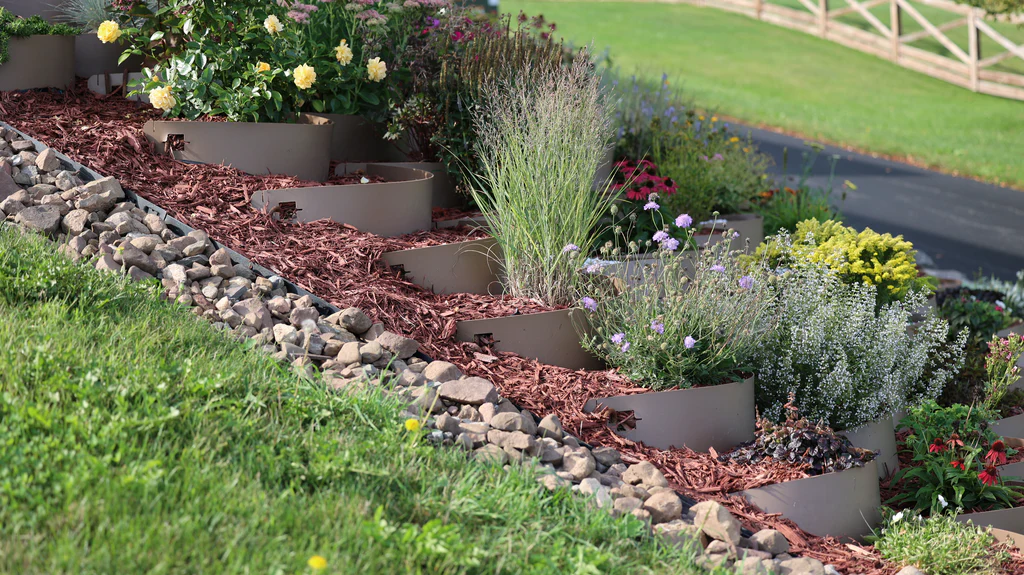
Don’t underestimate the power of upcycled materials. I’ve built mini retaining walls and planting beds out of old bricks, wooden crates, and even cinder blocks. It gives your garden a quirky, personal touch that you just can’t get from store-bought products.
One of my favorite weekend projects was turning a stack of old pallets into tiered herb beds on a hillside. I staggered them like steps, filled them with soil, and added rosemary, thyme, and mint. It looked like a vertical garden tucked into the slope.
Not only did it save money, but it also kept a bunch of stuff out of the landfill. If you’re into sustainability like me, this is a satisfying and cost-effective way to garden.
8. Edible Hillside Garden
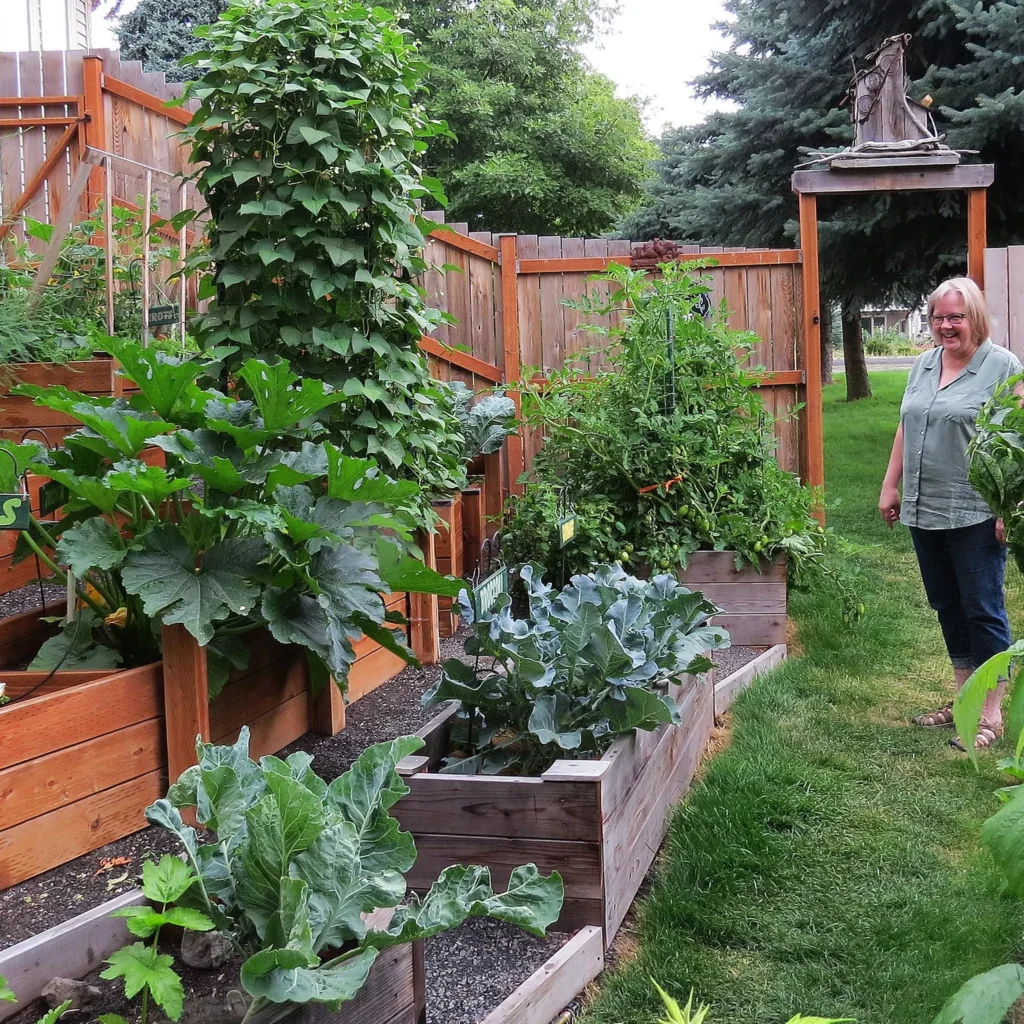
Why not make your slope productive as well as pretty? An edible garden on a slope might sound tricky, but it’s totally doable with a little creativity. I started small with a few tiered planter boxes built from scrap wood, and now I’m harvesting tomatoes, kale, and even strawberries.
The natural slope helps with drainage, which is great for many veggies. I like using straw bales or stackable garden beds to make the planting easier to manage. You don’t need a ton of space, either—just work with what you have.
It’s incredibly satisfying to grow your own food, and it can even save you money on groceries in the long run. Plus, nothing beats picking fresh herbs just steps from your kitchen.
9. Simple Water Feature Using Gravity
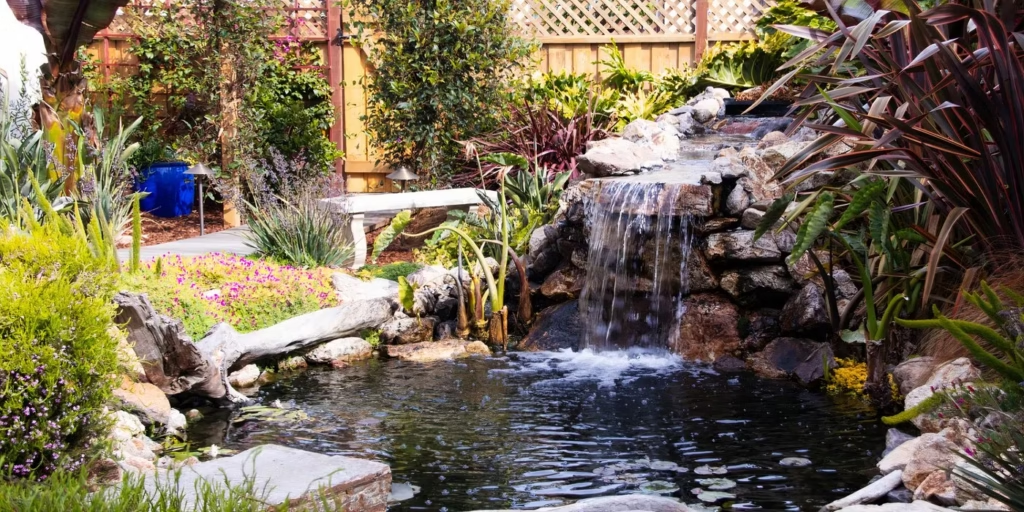
A slope gives you the perfect opportunity to install a cascading water feature, and it doesn’t have to be fancy or expensive. I used a plastic liner, a small solar pump, and a bunch of rocks I scavenged to create a gentle waterfall feature on my slope.
The water runs downhill naturally, and the sound adds a relaxing vibe to the backyard. You can even design it to recirculate, keeping maintenance low and costs minimal.
If you’re into attracting wildlife, birds and bees love water sources. It became a focal point in my backyard and something visitors always comment on.
10. Seating Nooks with a View

Sometimes you just need a spot to sit and enjoy the view. I carved out a small, flat landing halfway up my slope and added a bench made from concrete blocks and a salvaged wood plank. Instant cozy nook!
The natural elevation gives you a new perspective on your yard and makes it feel like a little hideaway. Add a few potted plants, a cushion or two, and maybe even a small table for your morning coffee.
It’s amazing what a simple bench and a nice view can do for your backyard experience. Plus, it gives you a reason to climb up and enjoy all your hard work.
11. Budget-Friendly Erosion Control Ideas
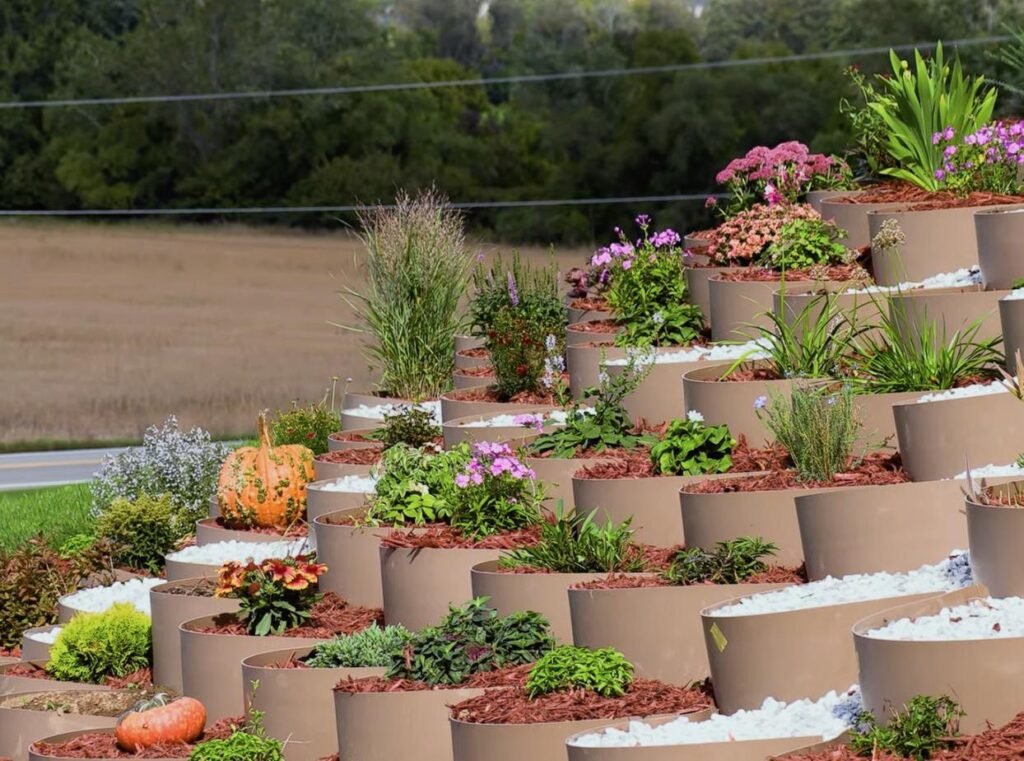
If you’ve ever dealt with a slope washing away after heavy rain, you know how important erosion control is. I’ve used jute netting and straw mats to hold soil in place while my plants established themselves. Both are inexpensive and biodegradable.
You can also use fast-spreading ground covers like creeping thyme or ice plant. These beauties cover the soil quickly and look amazing while doing their job.
Combining physical barriers with plant roots is the best defense. It doesn’t take much money—just consistency and a little know-how.
12. DIY Fire Pit Area on a Leveled Pad
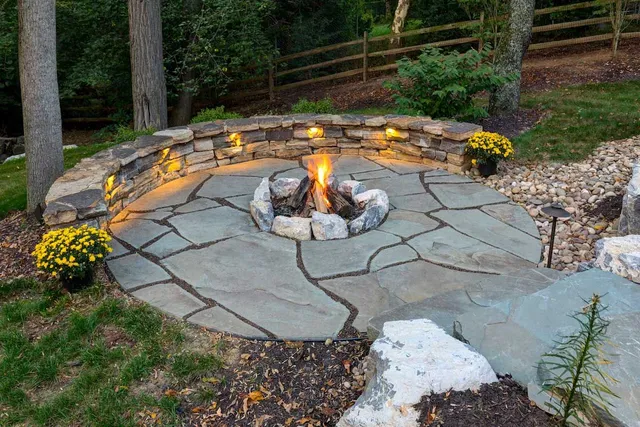
One of my favorite backyard additions was a fire pit on a leveled-out portion of my slope. I used gravel and leftover pavers to flatten the area, then stacked stones into a circle to create the pit.
It instantly became the go-to spot for family evenings and s’mores nights. You can even use tree stumps or salvaged chairs for seating to save more cash.
Just make sure the area is safe and away from overhanging branches. A little effort turned my underused slope into a warm, inviting hangout spot.
13. Add Vertical Elements for Visual Impact
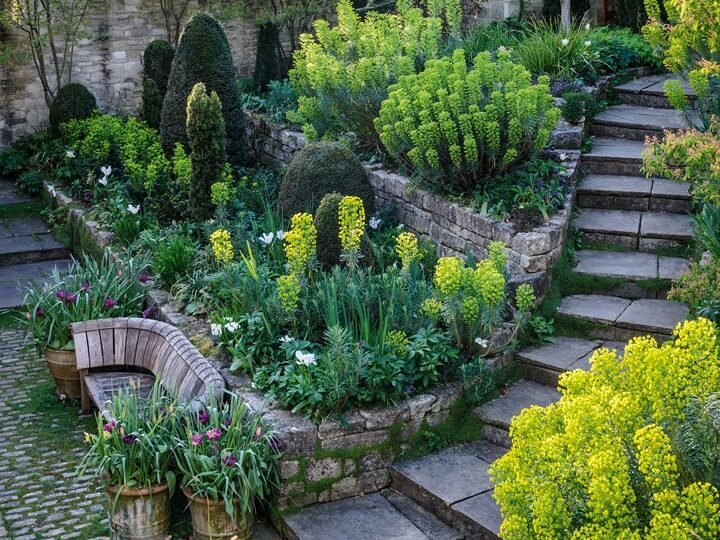
When your space goes up instead of out, vertical elements are your best friend. I hung planter boxes on a wooden trellis built from scrap lumber and planted cascading flowers for a dramatic effect.
Old ladders, fence panels, and even pipes can become vertical gardens. This technique is budget-friendly and adds a lot of personality to your yard.
Plus, vertical gardening is great if you don’t want to dig into your slope too much. It keeps everything within reach and adds that wow factor to your hillside.
Final Thoughts
A sloped backyard might feel like a burden at first, but with the right approach, it can become your favorite part of the home. I’ve tried many of these ideas myself, and they truly work without breaking the bank.
Whether you’re adding steps, growing food, or just creating a peaceful place to sit, every little change makes a big difference. Don’t be afraid to get creative, use what you have, and tackle one project at a time.
Have fun turning that slope into a stunning, budget-friendly retreat—and don’t forget to share your own transformations!

